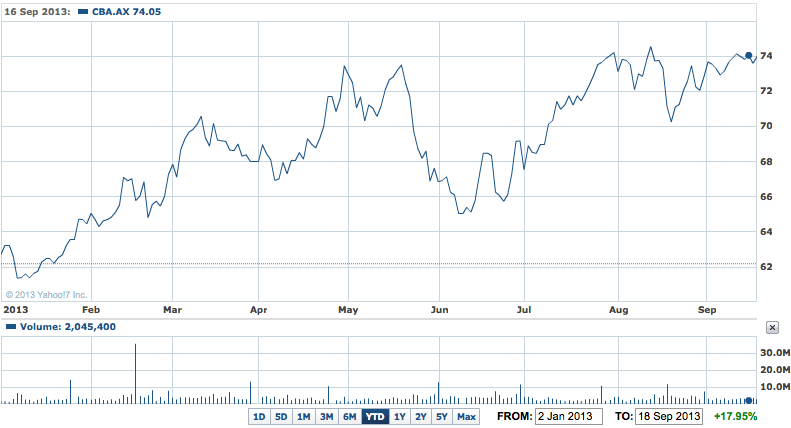Representatives of the country’s two main bank regulators, APRA and the Reserve Bank went out of their way yesterday to downplay talk of a house price bubble in Australia, but confirmed there was official concern at the way house prices had risen sharply.
The RBA reminded banks to maintain prudent lending practices in the minutes of the September board meeting, as well as indicating regulators were watching the way the property boom in New Zealand developed, and also would closely monitor the move by self-managed superfunds into investment residential property.
The three instances indicate RBA concern and followed a warning from APRA last week to the banks to watch home lending at high loan to valuation ratios.
The upsurge in publicity about the warnings brought talk of property bubbles. But the reports didn’t really impact the shares of the big four banks. While the ANZ fell 0.2% to $30.73 and the NAB lost 0.1% to $34.64, the CBA (the country’s biggest home lender) saw its shares rise half a per cent to $73.98, while Westpac shares (it’s the number 2 lender) saw its shares end 0.2% higher at $32.52.
CBA YTD – Big bank shares not really hit by regulatory concerns on housing

Speaking at a finance industry conference yesterday, APRA head Dr John Laker and RBA Assistant Governor Dr Malcolm Edey (who oversees the country’s financial system) both said some perspective was needed at the moment. Dr Edey said talk of a bubble was "unrealistically alarmist", but conceded the central bank was monitoring the growth in house prices.
"We shouldn’t be rushing to reach for the bubble terminology every time the rate of increase in house prices is higher than average because by definition that is 50 per cent of the time," he told the conference.
Dr Edey said there was "no doubt" demand for housing was rising but it was critical to keep the trend in perspective.
"Looking back over the last 10 years or so, house prices have risen at a rate equivalent to or on average less than the growth of household incomes, but did say that prices at times rose faster than house hold income, such as now.
"We’re in one of the higher than average periods at the moment, but we shouldn’t be rushing to reach for the bubble terminology every time the rate of increase in house prices is higher than average, because by definition that’s 50 per cent of the time," he said. "You’re just going to be unrealistically alarmist by making that call every time that happens.
“This is a low rate environment and one of the effects it that it stimulates demand and housing. We are seeing that influence in the housing sector and that’s not surprising because its an interest rate sensitive sector,” he said.
And Dr Laker told the conference he acknowledged the economic risks created by very low interest rates, such as now.
"While cutting the cost of borrowing was helping the economy to rebalance, he said banks could come under pressure to lower lending standards to protect their market share.
‘‘There is a risk for deposit-taking institutions in particular that they do not fully understand ability of their borrowers to service their debts when interest rates ultimately return to higher levels,’’ Dr Laker said.
But Dr Laker stressed that this was not new territory for the regulator and it had been on APRA’s radar for several years.
‘‘It’s been something that we have been in the last few years talking to deposit-taking institutions about very, very closely,’’ he said.
But what both men didn’t really discuss was the threat from the housing boom in New Zealand (where our big four banks dominate and are the biggest lenders) occurring as the banks back in Australia grappled with rising demand for housing loans (especially for existing homes) at a time when unemployment is forecast to worsen.
As well, there was that very specific singling out of the self-managed superfund sector and the emerging trend of funds investing in negatively geared property. That is going to be closely monitored by the RBA (and presumably APRA as well).
Dr Laker pointed out that "The (Australian) banking sector is holding more capital, it’s holding higher quality capital, it is holding more liquid assets". It is that, but bad debt provisions are now at low levels compared to the economic cycle and the expected rise in unemployment.













